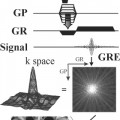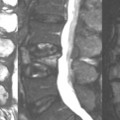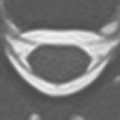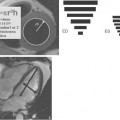8 Motion Reduction: Triggering, Gating, Navigator Echoes
One of the major drawbacks in MRI has been, and still is, artifacts due to motion of the patient, which may be secondary to discomfort, pain, unconsciousness, or lack of compliance. In addition, cardiac motion, respiratory motion, and peristalsis of the bowel may markedly degrade image quality. Although the development of modern sequences with motion correction (such as BLADE, see Case 31) allow for diagnostic imaging in uncooperative patients, MR evaluation of the thorax and abdomen in uncooperative patients generally necessitates special triggering and gating techniques to obtain diagnostic images.
 Cardiac Triggering
Cardiac Triggering
Despite the availability of MR sequences with an acquisition time below 1 sec, cardiac MR in general requires special triggering techniques to provide diagnostic images with sufficient spatial resolution and SNR without motion artifact. In principle, cardiac triggering requires monitoring of a biologic signal corresponding to the heartbeat. This is feasible by either monitoring the ECG or the pulse. For ECG monitoring, MRI-compatible ECG leads are necessary to prevent burns at the sites of application. Usually, R-waves are used to trigger the sequence acquisition as they commonly provide the highest voltage and are thus easiest to detect. Alternatively, pulse signals may be obtained for triggering of the sequence acquisition by applying a pulse monitor to a finger or a toe. Whereas its ease of use is an advantage, major drawbacks include inconsistencies due to finger motion, weak pulses due to peripheral artery disease or cold extremities, and a slight delay in signal triggering compared with R-wave detection by ECG.
In cardiac MR, one must decide whether to apply a single-phase or a multiphase (cine) imaging approach. Note, however, that in this context, phase refers to different times within the cardiac cycle and not to a certain phase of proton spins or angles. Cine imaging is a multiphase technique that is used to obtain information about ventricular function and the morphology and function of the cardiac valves and to quantify flow and describe the flow pattern within the cardiac chambers, across the valves, and within the great arteries.
The techniques used to perform cine imaging (e.g., SSFP) employ a very short TR This allows the same slice to be acquired at different times during the cardiac cycle. SSFP sequences can employ either prospective triggering or retrospective gating, monitoring either pulse or ECG signals. In the latter, data acquisition is performed continuously during the cardiac cycle while the ECG signal is monitored at the same time. The acquired k-space data are thus given a time stamp relative to the cardiac phase. After complete acquisition of all Fourier lines, in a second step the acquired data are sorted into different k-space matrices encoding for different images displaying different times in the cardiac cycle. Using a prospectively triggered approach, cine SSFP sequences allow the option of arrhythmia rejection based on the average duration of the cardiac cycle. In the case of an abnormally long or short R-R interval, the acquired data during the corresponding cardiac phase is retrospectively rejected. In addition, this application, known as arrhythmia rejection (AR), automatically extends the scan time to sample the rejected data in further prospectively triggered phase-encoding steps.
Stay updated, free articles. Join our Telegram channel

Full access? Get Clinical Tree








